For Londoners, it is an emblematic building of the urban landscape. For the rest of the world, it is the cover of a famous Pink Floyd album. Forty years after its closure, the former Battersea Power Station is reborn as a shopping center and office buildings. An event for tourism. A mistake for heritage lovers.
A divisive transformation
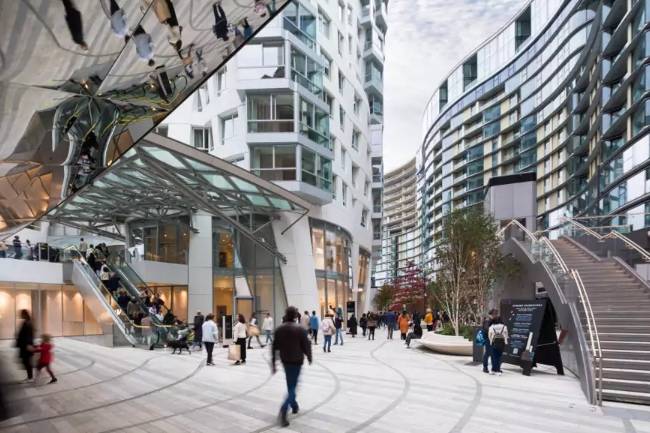
This is called a proper rescue.
Ten years ago, the old Battersea power station was abandoned, almost ready to collapse. There was then little hope for the survival of this iconic London building of the 1930s, made world famous by the cover of the Animals album, by Pink Floyd, in 1977.
Now this icon of the British urban landscape is resurrected, four decades after its closure, in the form of a shopping centre, luxury condos and office buildings.
Inaugurated in mid-October, this restored version of the power station did not fail to create buzz in the media. Some have expressed reservations about its commercial recovery. But it cannot be denied that its offer is diversified.
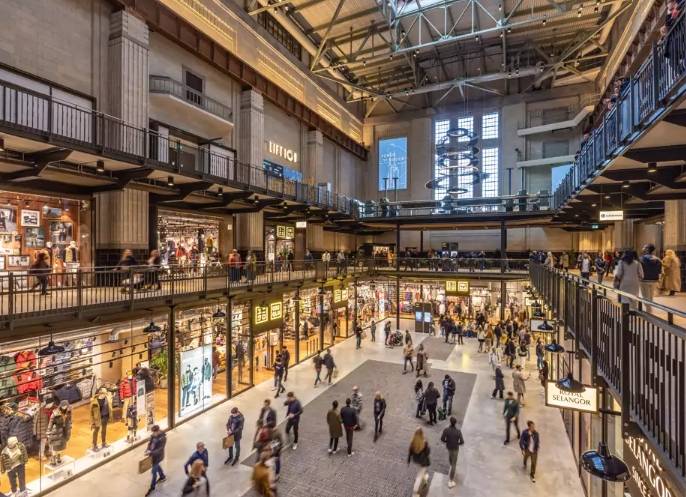
The site has more than 200 shops, with a penchant for the high end. Clothes, perfumes, beauty products, luxury watches, electric cars and motorcycles… You can also meet there for a coffee, a drink, a meal at the restaurant, or even a night at the hotel. Not forgetting the cultural component, with its two cinemas, its theatre, its two free museums (one dedicated to the history of the plant, the other to its cultural impact) and its outdoor skating rink, near the Thames.
The icing on the cake: an elevator has been installed in one of the four famous white chimneys of the building, offering for 16 pounds sterling a breathtaking view of London. On the day of our visit, this tourist attraction was not yet open (it is now). On the other hand, we had the chance to visit one of the old control rooms, which has remained completely intact, with its buttons and dials straight out of an old science fiction film. Total return in the future, the place will unfortunately not be open to the general public, but rented for events, business or cultural.
Sign of an undeniable power of attraction, 250,000 people visited the place the weekend of its opening and it is expected that 25 million will go there over the next year. A metro station has been built on the site, hitherto inaccessible, which will facilitate visits.
“I think everyone was waiting for this moment because everyone has a connection with this building,” says Beau Limbrick, communications officer for the Battersea Central Development Project. “This building is part of our heritage. The most important thing was to make it available to the population.”
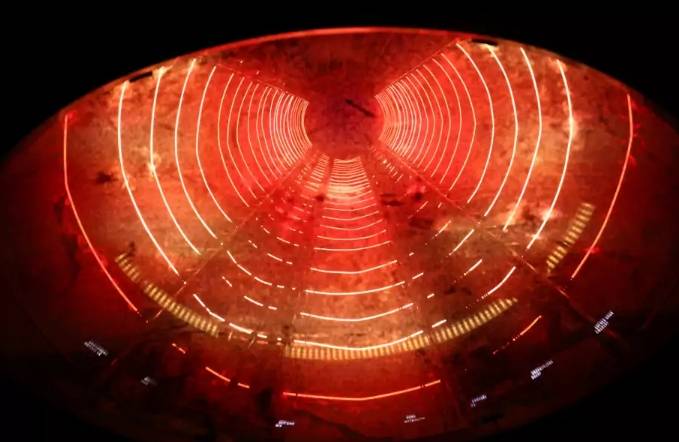
A monumental project
However, survival was far from assured for this notorious industrial building, which went through all the weather before being bought in 2012 by a Malaysian consortium, which injected more than 9 billion pounds sterling into the project.
Originally designed by architect and designer Giles Gilbert Scott, who is also famous for his iconic red telephone boxes, Battersea Power Station was built in two phases between 1929 and 1955, in a style that could be described as ‘Post-industrial Art Deco.
During its great years of activity, this red brick monster supplied electricity to one-fifth of the British capital, in particular Buckingham Palace and the Parliament of Westminster.
Its towering figure eventually became a landmark of the London landscape, although some have called its design “gigantic and unnecessarily ugly”.
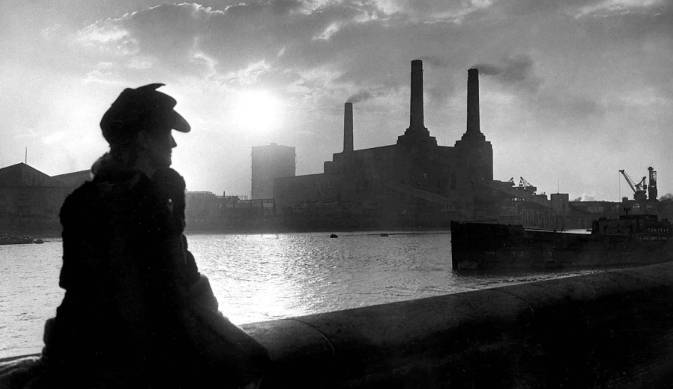
The rest comes down to a series of aborted projects. When it closed in 1983, the building was privatized and sold for 1.5 million pounds to an English businessman, who wanted to turn it into an amusement park, then resold for 10 million pounds in 1993 to a conglomerate of Hong Kong, then to an Irish holding company for 400 million pounds in 2006, before being bought out at the same price by its current owners, a consortium of Malaysian investors (PNB, Sime DarbyProperty, S P Setia, Employees Provident Fund) who finally put it back on its feet after four decades of neglect, in addition to contributing 300 million pounds for the extension of the underground line…
Lots of new
The designers say they have renovated the premises with the greatest respect. They took care to retain the structure and a handful of elements from the original power plant in addition to ordering 1.75 million new red bricks from the original manufacturer for restoration.
But beyond these “vintage” touches, it is above all the renewal that is striking.
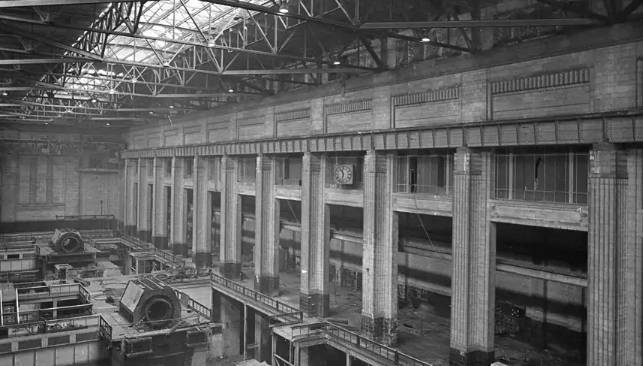
In addition to the elevator, windows have been pierced in the side facades for the lighting of the offices (six floors just for Apple). A sinuous design esplanade unfolds at the rear of the building, opening onto a brand new commercial district and two buildings designed by star architect Frank Gehry. Not to mention the 200 luxury apartments built at the top of the plant, ranging from 560,000 pounds for a studio, to 8.4 million for a penthouse.
For Visit London, there is no doubt. The new area around the former Battersea power station “is an exciting new attraction for London, as the city continues to reinvent itself”, says Laura Citron, director of London’s flagship tourism body, anticipating “growing footfall”. places. For Vincent M., a visitor met on the spot, who came out of curiosity, this site will make it possible to avoid the usual London shopping districts. “Finally, no need to go to Oxford Street anymore,” he told La Presse.
However, this enthusiasm is not shared by all.
Voices are raised against the commercial vocation and the urban planning of the project, in defiance of history and heritage. And those reviews are fierce…
A series of bad choices
Why did you opt for a commercial project, when the Battersea power station could have become a jewel of industrial tourism?
“I am very happy that the building has been restored. But the way it was done is appalling. That saddens me.”
Aubrey Powell doesn’t mince words when he talks about the Battersea Station Development Project. And he is well placed to talk about it: it was he, the designer of the cover of Pink Floyd’s Animals disc, who made the building world famous in 1977.
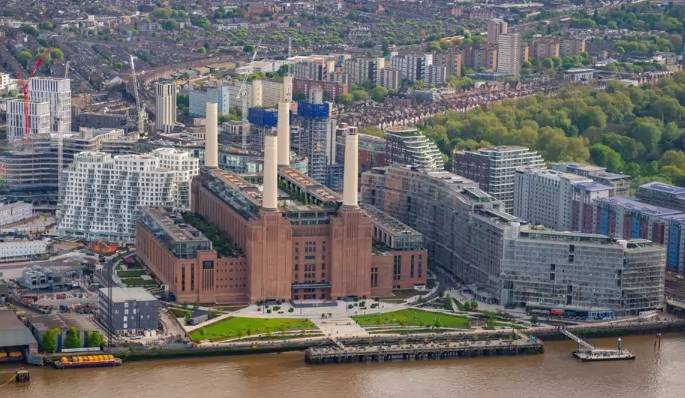
Still living in London, the co-founder of the Hipgnosis agency regrets that the view of the old power station is now obstructed by a new residential and commercial complex that surrounds it almost completely.
They have obliterated the pleasure of seeing this magnificent building, which has been there since the interwar period and which is a piece of history. The perspective we had on the cover of Pink Floyd is also gone forever.
Aubrey Powell, graphic designer
“To be honest, I find it offensive that we let this happen,” adds the 76-year-old graphic designer, referring to a real “prank”.
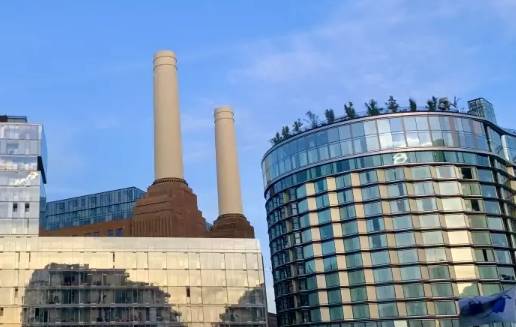
This opinion is shared. Defenders of industrial heritage have stepped up to denounce the way in which the old power station has been restored.
Among them, the architect Keith Garner, who has been campaigning for the preservation of the building for years.
Mr. Garner is pleased that the developers have retained elements of the original plant, in particular two old control rooms, whose walls worthy of an old science fiction film now serve as the backdrop for a bar and a room for events.
For the rest, “what they did is inexcusable”, he claims.
Like Aubrey Powell, Keith Garner regrets that the power station is almost no longer visible, except from the opposite bank of the Thames. He vigorously denounces the many additions of windows, which have “completely changed the personality of the building”, and deplores the decision to replace the original chimneys.
“They needed repairs, but it was not necessary to destroy them”, he insists.
These “modifications” are all the more inexcusable as the plant was part of the 6% of British buildings classified II* (particularly important, of more than particular interest), by the organization Heritage England, guardian of heritage in the Kingdom. -United.
“It is clear that they have not done their job. For me, these are the first culprits, “still accuses Keith Garner.
An inevitable compromise?
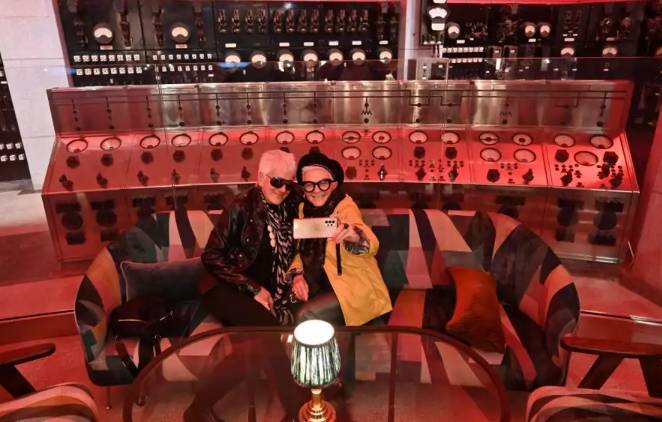
The architect regrets even more that the building was saved for commercial purposes. He was told that after having spent 9 billion pounds on renovations, his owners had to seek a return on their investment. And this is also the point of view of Jonathan Foyle, an expert in architectural heritage, whose discourse aims to be more pragmatic.
Without the Battersea Station Development Project, he says, the plant would have ended up being demolished.
“I’m quite ambivalent on the matter. I find the result harmless, with its shopping center, its simulacra of heritage remains and its trophy apartments. But without this assumed choice of commercial development, how could we have subsidized the rescue of the building?” – say Jonathan Foyle, architectural heritage expert.
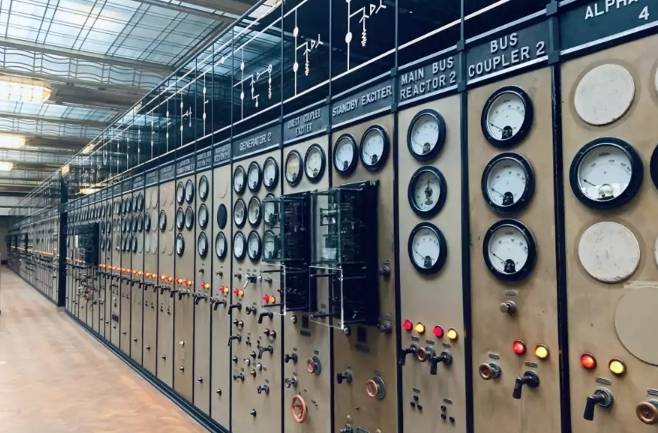
Since the time he thought about it, Keith Garner has the answer to this question. According to him, the rescue of the building could have been financed by money from the national lottery, like this other power station designed by Giles Gilbert Scott, which now houses the Tate Modern museum in London.
To make it a cultural space? Not necessarily, replies the architect. Battersea Power Station could simply have become a hotspot for industrial tourism, like the old Zollverein complex in Germany, declared a UNESCO World Heritage Site.
“Battersea Power Station is very beautiful. It exists by right. It doesn’t have to be anything, concludes Keith Garner. It could just have been an industrial park, with its cranes, its boilers, its turbines, its machinery. There would have been a cultural appeal. We would have visited that. We would have hung out there. We would have had a coffee, we would have read the newspaper, whatever. I don’t want to come off as the grumpy on duty. But as long as it’s a shopping center, I wonder if we shouldn’t have just tossed it on the ground…”
Grain to grind for the Canada Lands Company (CLC), owner of the gigantic Silo No. 5 in the Old Port of Montreal, which we still do not know what to do with and which has been the subject of all fantasies, since its closure in 1994. Hotel? Museum ? Witness of the industrial era? All options are on the table…
Aubrey Powell: “I was afraid of causing the worst air crash in history!”
An inflatable pig in the middle of the four white chimneys… The well-known image of the Animals cover has made more than one fantasize. Its designer Aubrey Powell tells the underside of its design.
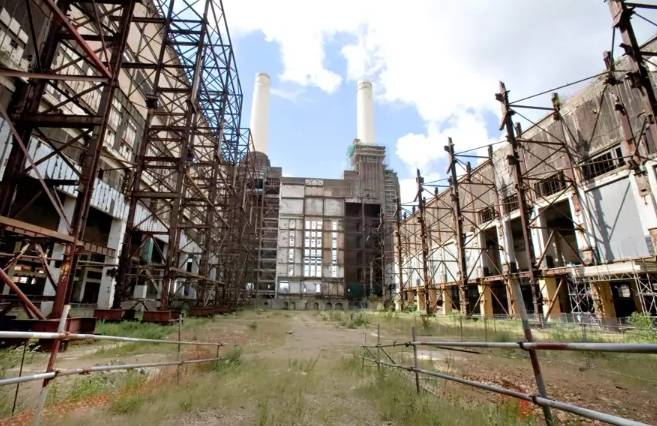
You have created several covers in your life. Where is Animals in your list?
It’s one of my favorites, because of the story that comes with it. Quite an adventure. Roger Waters [bass player and leader of Pink Floyd] said to me:
“I have this huge inflatable pig that is 40 by 25 feet. I want to fly it between the two chimneys of the Battersea power station. On December 2, 1976, we landed on the site. It was cold. I had eight cameramen and a film crew in a helicopter. The police had to send us a sniper to blow up the pig if there was a problem. He never showed up. But the bolts holding the pig’s chain broke and the pig flew 20,000 feet into the air, heading for Heathrow Airport. I was afraid of causing the worst air crash in history!”
Did you have time to take the photo?
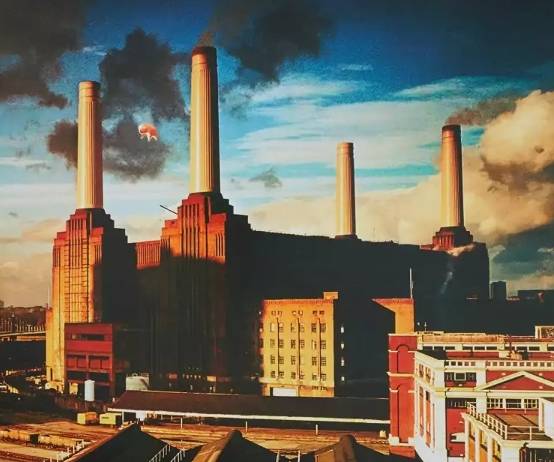
No, it happened too quickly. But that day, the sky was amazing. Like a Turner painting. So I took pictures of the plant without the pig. In the evening, a farmer called me. He said, “Are you looking for a giant pink pig?” I said yes. He said, “He’s in my field, he’s terrorizing my cows. ” I am not lying to you ! I sent a team to bring him back. We started again the next day with stronger chains. This time it worked. But the sky was light blue, not very interesting. So I proposed to Roger to glue the pig of the second day on the sky of the first day. He said OK, and that’s what we did. The photo that we know does not exist as such. It’s a collage.
Why didn’t you stick the pig in from the start? You would have taken less trouble.
Yes, but with Hipgnosis, we wanted to do everything for real. Like the man on fire on the cover of Wish You Were Here. It’s not a montage…
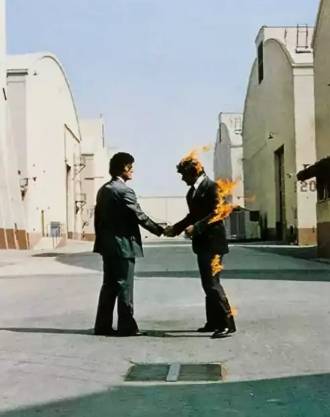
Why did Roger Waters specifically want this building?
He liked the idea of four chimneys because there were four people in the group. He liked the idea that the four chimneys were like four erect penises. He liked the idea that it looked like a table if you flipped it. He also liked that this huge London power station was starting to fall into disrepair, surrounded by rubbish bins, broken cars, barbed wire, old coal pits. For him, it represented the Animals album well. The disc is based on Animal Farm, the book by George Orwell. For Roger, the power plant represented greed, the power of big business. Everything was there.



